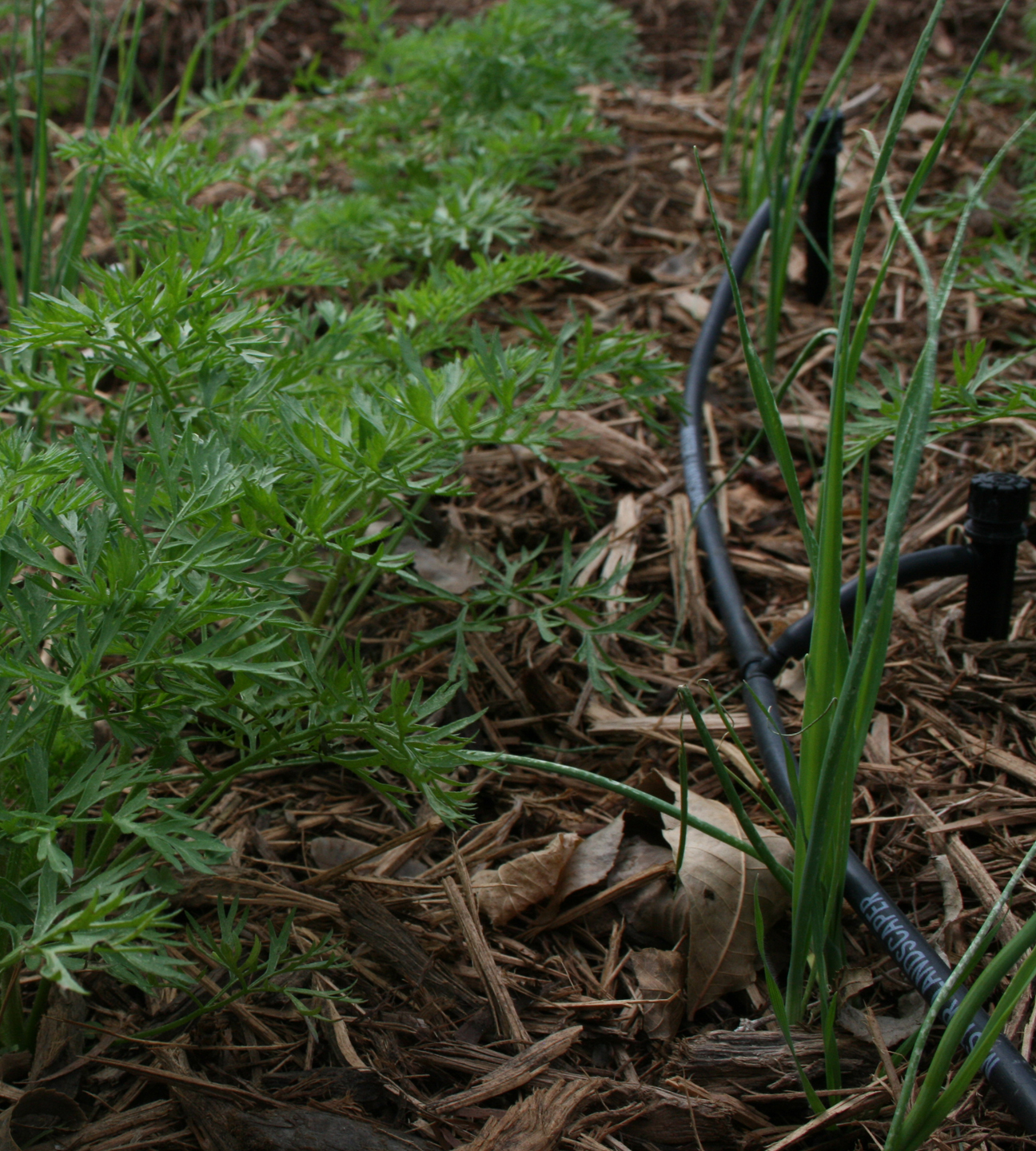Droughts, Watering, and Austin Gardens
It has been a humbling year for experienced gardeners. The depressing 100+ degree days and lack of rain that kept us indoors in Texas has devastated home gardeners, farmers, and ranchers alike. Our estimated agricultural damage – $4.1 billion dollars (source: AgriLife Extension Service at Texas A&M University).
Droughts are a natural part of life in Texas. In my residence in central Texas I have born witness to two devastating droughts. The first drought marked my move to San Marcos (1996-1997) but the drought ended and with a bang – the October 1998 flood that wiped out houses and lives in the cities of San Antonio, New Braunfels and San Marcos. I have now lived through what new reports deem an “exceptional drought” (2007-2009). This blog post is not just about remembering history but understanding how to adjust our expectations and prepare for “exceptional” weather. Water is a dwindling natural resource and droughts remind us how quickly our everyday lives can disappear without access to water. Watering is a luxury during a drought and if you live off the food you grow then you learn to do without. After the latest rains you will have to adjust your watering but we are relieved to see the rain gauges rising. Congrats!
As garden designers, installers, and food growers we talk to our clients about weather and its affects on their gardens in great detail. From what we have seen in our client’s gardens we can conclude some useful tips and observations. We encourage gardeners to keep a journal remembering the good and bad. If you have to face gardening in drought conditions, keep the following in mind:
An irrigation system is vital

Every garden has been unique and those gardeners who installed some type of timed irrigation system have had 50% more success in production. Watering restrictions should be followed but you may need to create a unique watering schedule. For instance, if you are only allowed to water your garden once a week set the timer for one hour in the morning and one hour in the evening according to you time restrictions. You may even have to increase the time if the plants are not getting enough. It would be better to water twice a week for an hour but follow your restrictions as needed. We also recommend mulching your garden to retain moisture. Bare soils dry out quickly and also allow the sun to heat up the root zone. We apply double shredded cedar to our clients’ gardens.
Bees are scarce in a drought
We cannot say enough about how vital bees are to our lives. Once the temperature hit the 100s we saw few bees and got calls to look at why plants were not producing. No bees = no fertilization = no veggies and fruits. Everyone suffered this summer and we hope our bee-keeping friends didn’t lose too many hives. Without the bees some gardeners have taken on the role of moving the pollen from one flower to another. All the squash, zucchinis, cucumbers, melons, and pumpkins are in the same family so they produce male and female flowers. The male flowers have the pollen – females have a sticky stamen and a mini-fruit below the flower. Take a male flower and peel back the petal until you just have the pollen stem showing. Use it like a paintbrush and dabble the female flower’s stamen. The flowers are open in the morning, usually, so time your visit to the garden for about 8-9am to do this chore. For tomatoes, you might consider spraying with bloom set according to the directions.
Summer Gardens in Texas Benefit from Partial Shade
Partial shade summer gardens fare better during high temperatures and low rainfall. Some gardeners applied shade cloth over their gardens this summer to relieve the plants of sun scald and moisture loss. Shade cloth is available at Lowes and Home Depot. Look for 40% shade.
Amendments
Adding green sand, rock phosphate and worm castings to the pits you dig to put in your 4-inch pot transplants helps those plants develop a slight resistance to extreme stress. We also add diatamaceous earth (DE) that the plant absorbs. The DE discourages chewing insects.
Common problems
Every garden we worked on experienced blossom end rot. Why? Hot dry conditions. What is it? A brown or tan callus on the bottom of the fruit. It is most common in tomatoes, peppers, eggplant, and some melons. Blossom-end rot is a symptom of calcium deficiency in the fruit. It may be caused by low soil calcium, low levels of calcium in the maturing fruit, or other cultural factors — particularly fluctuating soil moisture (Univ. of Georgia) How to fix it: Grind up eggshells (4-6) and epsom salt (2 cups) in a mini chopper. Dissolve in a gallon of water and pour around the base of plants. It may take several doses to alleviate the problem (once per week for 4 weeks). You can also change your bimonthly fertilizer to fish emulsion or Garrett Juice.
Every garden had problems with ants and pill bugs. Why? Gardens were often the only areas around homes that provided water, food and lots of shade. How to fix it: First, for pill bug control, keep the area on the drier side. Water early in the morning. Keep mulch away from young plants and then only up to an inch around the base. Dust with diatomaceous earth around base of plants. Set up dishes of grapefruit halves or banana peels as traps for the pill bugs and scoop them up every morning and dump into soapy water to bring the population down. Pill bugs are useful in that they decompose dead plants or weak plants, so manual control is the best remedy.
Collect Rainwater
It is a good time to start a positive project. The City of Austin is fortunate to have rebates on rainwater barrels. There are workshops around town and you can start simple with a barrel and graduate up to tanks as you learn more. AgriLife Extension Service Workshop Blog
A quote appropriate for this summer: Gardening requires lots of water – most of it in the form of perspiration.- Lou Erickson
